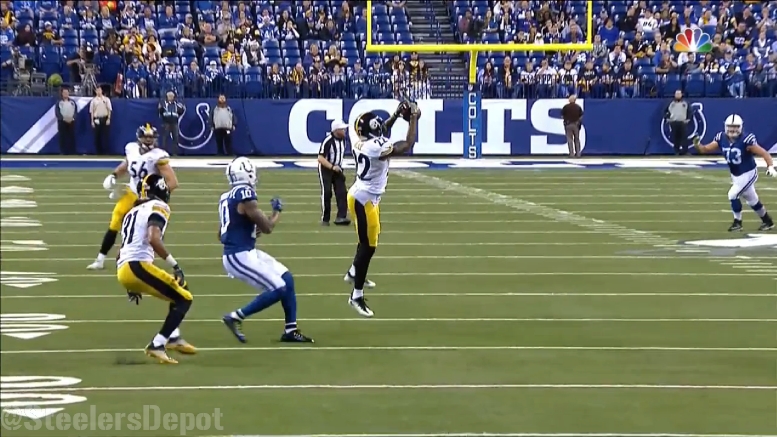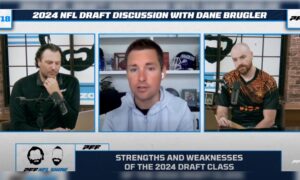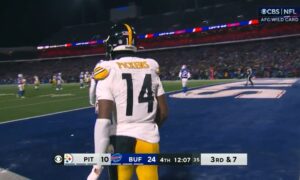Lot of people have been asking me to talk about William Gay in some film room sessions for the offseason. It was a little hard for me to center in on a topic but going through his tape last year, it reminded me about the position in general. It’s so difficult to pick up.
Artie Burns was able to make the transition as an outside corner because it’s a simpler position to play. Especially when you keep the scheme as watered down as possible, peppering in as much Cover 2 as possible. And even he struggled mightily at times.
We’ve written about how tough the slot is and all that it requires. We won’t get through everything today. But beyond playing in coverage and having to defend the entire route tree – splits and leverage don’t exist to take anything away – you have other responsibilities too. That’s going to be our focus day, looking at stopping the run and being part of blitzes.
Playing in the slot means you’re an active defender in the run. Not passive. You’re almost part of the box and the man replacing the nose tackle when the Steelers go into their 2-4-5 nickel. Lose that interior defender, make it more appealing for teams to run the ball. You’re part of the run fit.
That’s what we see in this first example. Buffalo runs a read option. Gay has to read his run key and sets the edge; Bud Dupree and Ryan Shazier are scraping, trading assignments, to play the option. Shazier is able to work off the block but he has to sift through the trash and get over the top. Isn’t completely clean so Gay serves as the force defender to keep LeSean McCoy inside and be funneled to Shazier. They both make the tackle at the LOS.
Sometimes the slot corner will be the alley defender too, the one to the inside gap of the force player. He’s generally the one who is going to be free and asked to make the tackle; the defensive line spilling (bouncing) the run outside. Gay is asked to do so later in the game vs the Bills, forcing McCoy north and into Shazier’s arms.
And sometimes, the corner is coming from the backside to clean up a run. Preventing a good run from being a great one. Good power run to the left from the New York Giants. Gay reads it, comes across the field, and throws his shoulder into the back to shut things down after a gain of seven.
Slot guys may be small but they have to be physical. To come down the alley vs the run and jam slot receivers at the line, disrupting their timing routes. Asking a lot.
Finally, they’re the corner most often used in blitz packages. First play of the game against the Indianapolis Colts. Butler’s Storm Fire Zone, one of his most popular blitz concepts. One-on-one with the back, Gay beats him, and strips Scott Tolzien, who is lucky he’s able to recover the ball.
It’s a very clear reason why the team could enter Week One as the starting slot corner, especially with Cam Sutton beginning things on the outside. Senquez Golson is still an unknown, I don’t want to discount him, and he has been able to soak up mental reps for two seasons. But it’s job descriptions like this that is going to allow someone like Gay, not a great fit for a more man-heavy scheme, to exist on the roster. He’ll do the dirty work well, an underrated value to the team.
And whoever replaces him, whenever that is, will have to do those things equally well.












